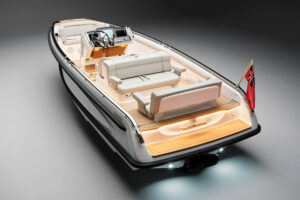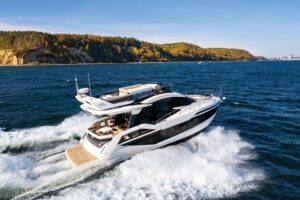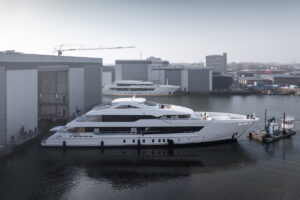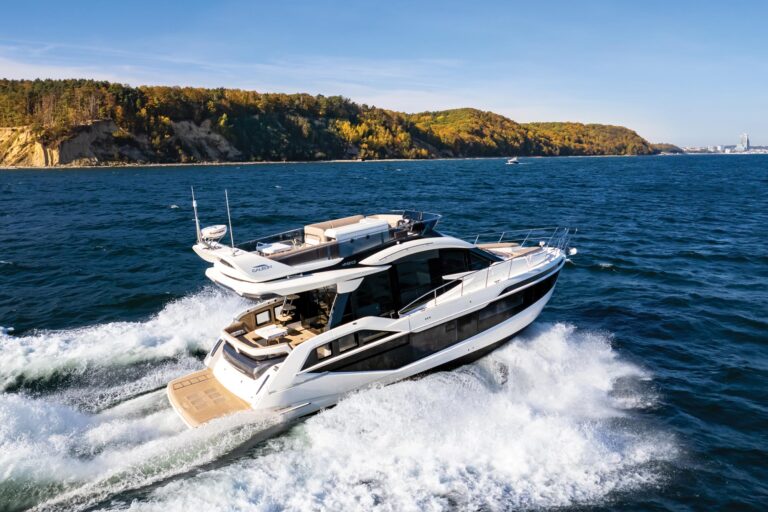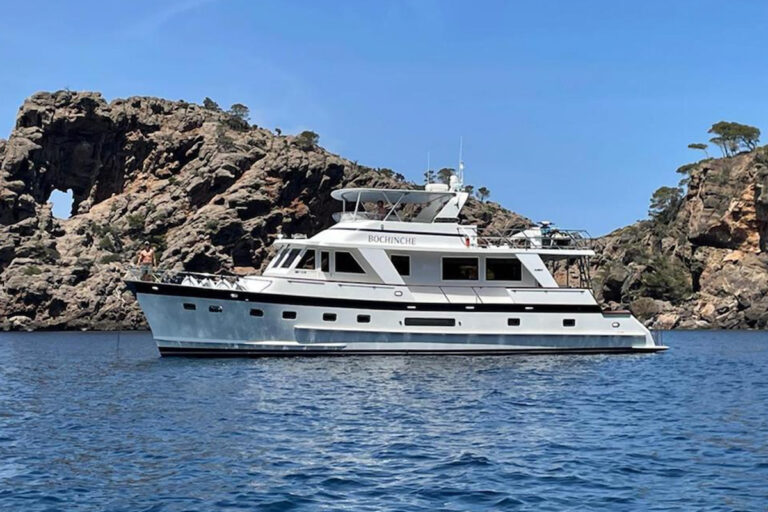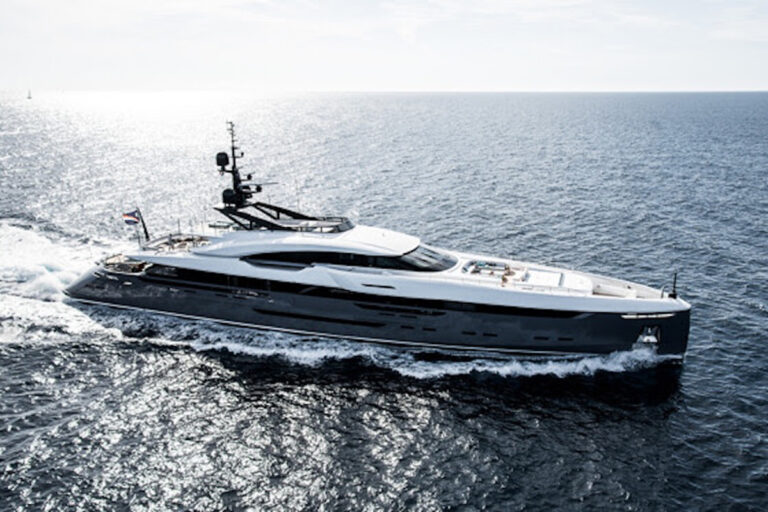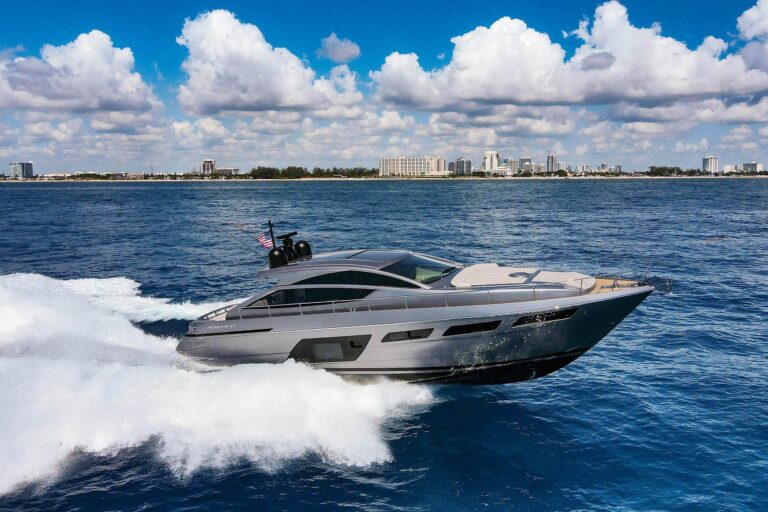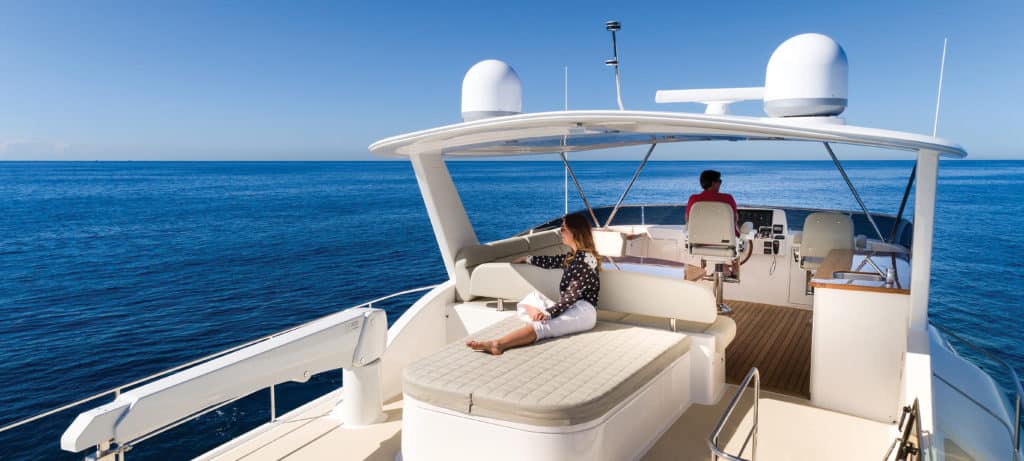
For the Grand Banks 60, I came a long way. Thirty-nine-thousand round-trip air miles to be exact, spread out over a flight to the builder’s factory in Johor Bahru, Malaysia, and another to the 50th annual Sydney International Boat Show in Australia, where I put her through her paces. In Malaysia, the Grand Banks brass spoke with ace-in-the-hole confidence about how the unfinished vessel was going to change the course of Grand Banks’ history — a dramatic statement indeed. In Australia, I found out exactly what they meant. The yacht — flush with carbon fiber and enviable performance data — represents a turning point for the famed trawler manufacturer. And as I cruised the coast just off Sydney’s rugged headlands, I came to a realization: Grand Banks had come a long way too. As you can see throughout these pages, the sturdy lines that have made Grand Banks an iconic brand for years remain intact. The 60 is, however, a bit sleeker than the classic 42s you grew up watching poke down the Intracoastal Waterway. Her superstructure is ever so slightly more raked, her long bow is less bunched, and her windows are tweaked back just a smidge — but the bones are still there, aesthetically speaking at least.
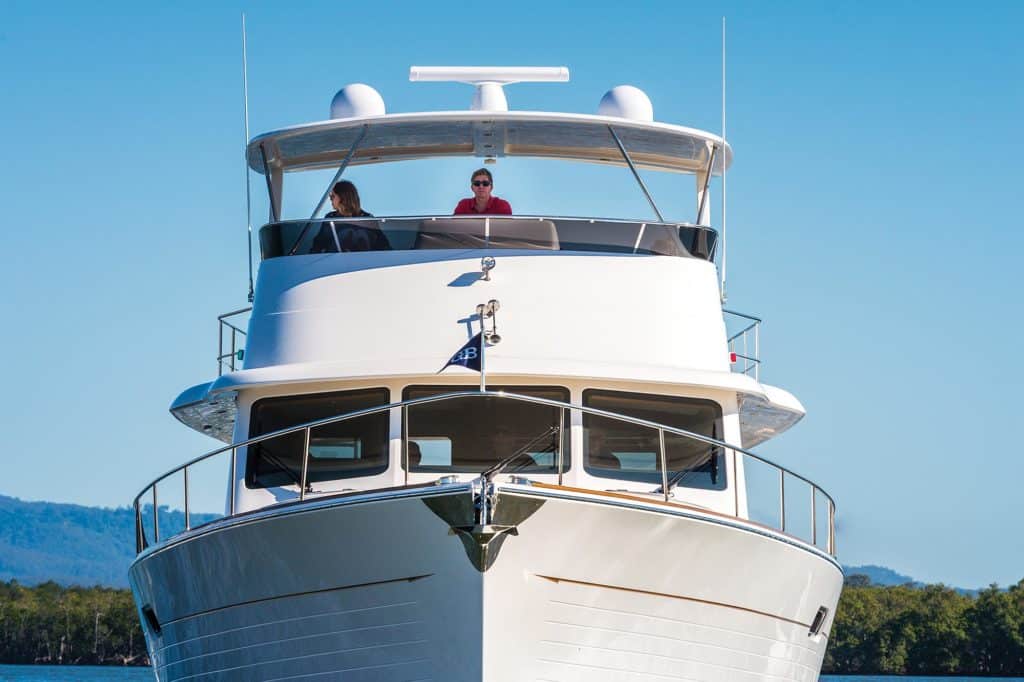
This yacht’s actual bones, though, the stuff she’s made of, represent one of the more interesting leaps a manufacturer has taken in recent memory. The 60’s superstructure is vinylester-resin-infused carbon fiber, versus the builder’s usual use of fiberglass. Mark Richards, founder of Palm Beach Motor Yachts (which Grand Banks acquired in 2014 before naming him CEO) dreamed up the idea. Richards has a serious pedigree in competitive sailing, and his powerboats take cues from that world. The 60 is a case in point: He’s not afraid to put a significant amount of carbon fiber on a boat. (Another example is the 60’s warped-hull design with varying degrees of deadrise and a small keel, but more on that later.)
AFTER THE PARTY
Perhaps not surprisingly, given that my test yacht was built for an Australian owner, its galley was aft. A standard placement in his part of the world, the location gives the chef good access to the cockpit. (Australians aren’t known for staying indoors, especially while on the water.) An aft-facing electric window, one of three on the 60’s main deck (the others are to port and starboard), opens to let in cool breezes and keep the cook engaged in cockpit conversations. For owners who prefer a different layout, Grand Banks has a forward galley option with slightly more space for indoor entertaining.
The decision to use carbon fiber in the yacht’s superstructure created multiple advantages, according to Grand Banks. It lowers the 60’s center of gravity, which keeps the yacht steadier in rolling seas. It also keeps the 60 relatively lightweight: The 66-foot-10-inch yacht displaces 63,900 pounds, reducing fuel burn and increasing range. With straight-shaft 900 hp Volvo Penta D13s (725 hp D11s are standard), the yacht cruises at 20 knots and burns a measly 34 gallons per hour. With the optional twin 900 hp Volvo Penta IPS1200s, the 60 can make 2,500 nautical miles at 10 knots. Her trawler heritage is evident.

Grand Banks has not traditionally been known for building speedy vessels, but when I pushed down the throttles and trimmed my test boat in the gently rolling 3s and 4s of the Tasman Sea outside Sydney Harbour, she nudged just past 30 knots to 30.6. Someone standing behind me whooped when the number came up, and I don’t blame him. This was not a sight many yachtsmen thought they’d ever see aboard a Grand Banks. And remember, that 30.6 number was on a hull with those D13s. With the IPS1200s, Grand Banks says it’s seen 36 knots.
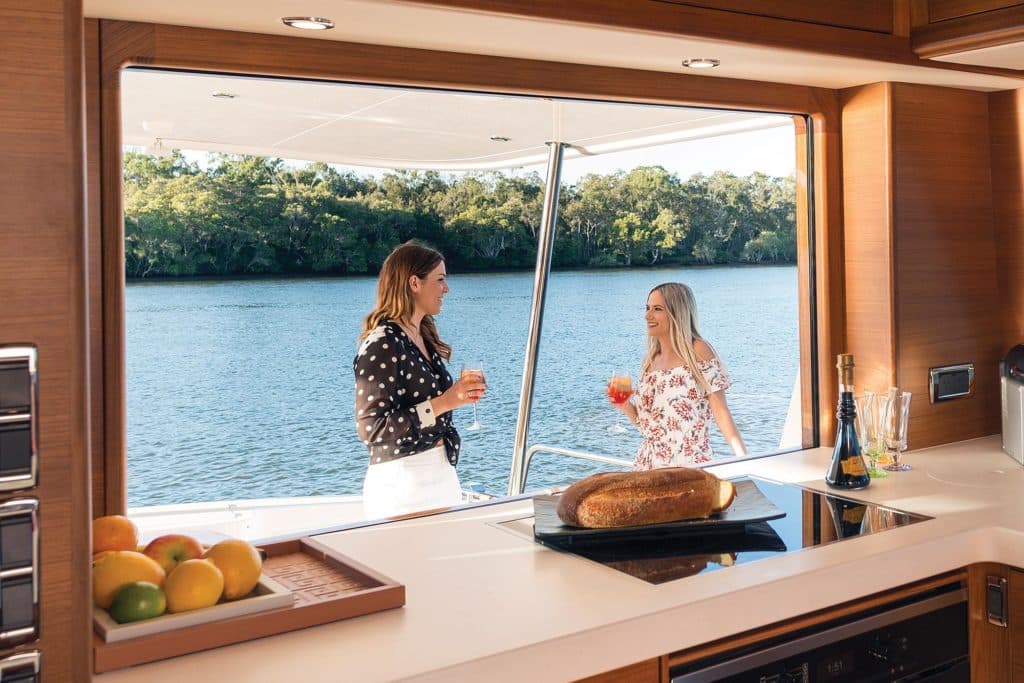
Even at top speed, the 60’s ride was smooth and confidence-inducing. And interestingly, the fine-entry hull, which Richards perfected at Palm Beach, barely throws a wake. It’s an act of nautical ninjutsu that has mesmerized me over the years as I’ve tested Richards’ hulls. The water simply peels past those deadrise variances (there’s a mere 8 degrees at the transom) and then dissipates.
The sturdy lines that have made Grand Banks an iconic brand remain intact in the 60. She is, however, a bit sleeker than the classic 42s you grew up watching poke down the Intracoastal Waterway. and with the Volvo Penta IPS1200 engine option, she reportedly hits 36 knots.
Performance is important, but it’s only one aspect of boating. Grand Banks has long been known for a certain style to its exteriors and interiors, and the 60 is an evolution, versus a revolution, of that reputation. The first thing that struck me was the optional full-teak transom. It’s simply gorgeous. I actually wrote “the transom is gorgeous” twice, in separate parts of my notebook. There’s more teak on the fixed swim platform (a Steelhead Marine ES1000 davit on the flybridge handles tender-launching duties), which provides access to an in-transom Kenyon grill and cooler.
HOWE YOU DOIN’?
Long rumored to be inhabited by descendants of the notorious HMS Bounty mutineers, Lord Howe Island is the largest of the 28 volcanic islands, islets and rocks that make up the UNESCO World Heritage Site known as the Lord Howe Island Group. The location was once a supply port for whaling ships, but tourism has largely been the main industry since the end of World War II. The island is nestled about halfway between Australia and New Zealand. This stark remoteness is a key reason why many of the plants and animals on Lord Howe
Island can’t be found anywhere else in the entire world.
My test yacht’s interior had a distinctly old-school panache, perhaps no surprise considering that Grand Banks is a favorite brand among sailors joining the powerboat realm. High-gloss and matte teak, both with exemplary joinery, accented the minimalistic, cream-colored upholstery. The indoor helm to starboard had both a teak wheel and a teak dash, as well as twin 17-inch Garmin screens, a Twin Disc Express Joystick System and Twin Disc QuickShift controls. A door lets the captain easily reach the starboard-side deck, and that joystick is within reach once he’s out there, making for easier docking.
Down below, the en suite amidships master had an athwartship king-size berth, a separate compartment aft that had a hanging locker with 6 feet 4 inches of vertical space, and 10 cabinets and drawers. Even on long journeys, the owner won’t lack for clean shirts.
The forepeak VIP’s arrangement was much more unorthodox, a setup that hinted at Grand Banks’ ability to customize, and something more unexpected. There was a queen berth — normal enough. But then there were twin bunks to each side, lofted above the queen. The guest stateroom to starboard was also creatively designed with a twin berth facing forward in its own compartment, and then another compartment aft and perpendicular to that one with another twin. It’s unconventional and almost looked like — could it be — a fish-boat layout?
Turns out that’s exactly what it was. The owner likes to take his buddies on adventures to Lord Howe Island, approximately 500 miles east of Sydney, where they fish for “kingies” (the colloquial name for yellowtail kingfish, prized for making sashimi).
With or without those particular guest accommodations, Grand Banks says, the 60 has become popular with gentlemen anglers, largely thanks to her speed. Hull No. 3 even has outriggers, a truncated cockpit overhang and an aft helm station up top.
You could color me surprised, but I suppose stranger things have happened, like, for example, a trawler-style Grand Banks shooting through the water at more than 30 knots. The world will never cease to surprise, no matter how well you’ve traveled it

